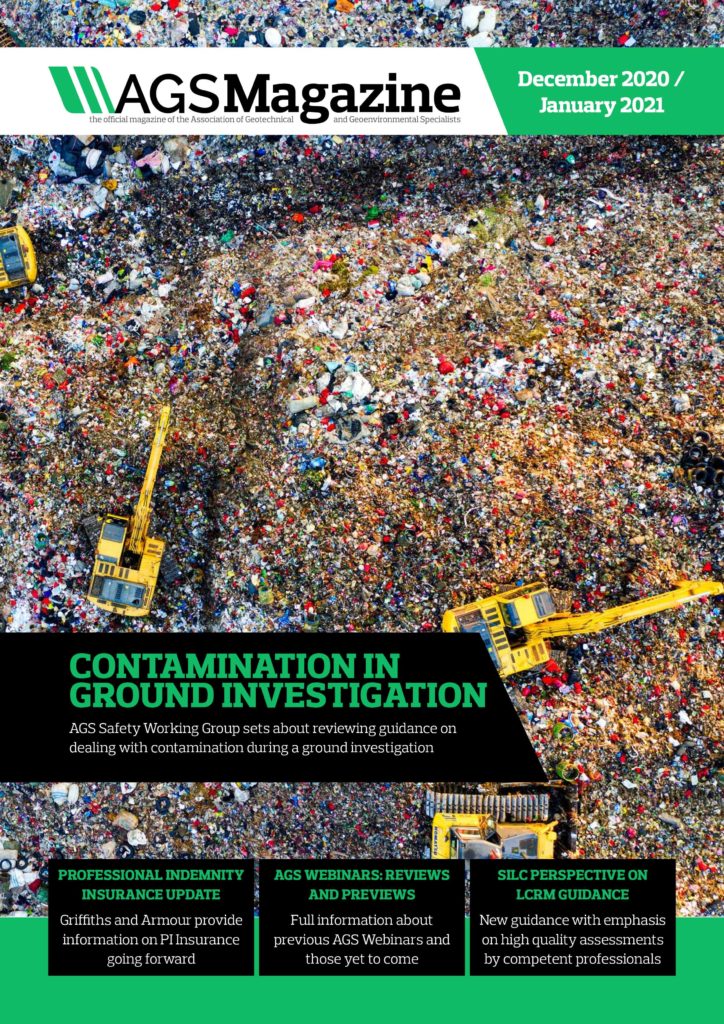
Full Name: Rachel Griffiths
Job Title: Contracts and Legal Manager
Company: Fugro
I started my career in 1988 as a maritime engineer in design offices and on construction sites in the UK and the Middle East but soon found that I enjoyed the commercial and contractual aspects more than the technical ones. Once I became a chartered engineer, I moved into contracts full time. I completed my law degree while working as a contract specialist focusing on construction and consultancy contracts. I joined Fugro in 2013 as legal and contracts adviser for land and marine projects and found that I needed to expand my knowledge to cover ground investigation contracts, so I completed a master’s in oil and gas law and wrote my thesis on offshore wind contracts. As part of Fugro’s European legal team, I now advise Fugro on legal and contractual matters regarding onshore and offshore ground investigations in the UK, Europe and Africa.
What or who inspired you to join the geotechnical industry?
I came to the geotechnical industry from the wider onshore construction world, but what attracted me to Fugro was the range of challenges in the offshore work. Whilst I well understood the risks and challenges of ground investigation and construction onshore, undertaking ground investigations offshore is another level of complexity. The constraints of vessels and resources, and the impact of weather, currents and water depths must be addressed in addition to the usual onshore risks of access and ground conditions. Every day is interesting and challenging.
What does a typical day entail?
At the moment, a lot of sitting at home in my study, attending MS Teams meetings! As a legal adviser, my role is primarily risk mitigation. This involves advising the Fugro business on commercial contracts with clients, partners, subcontractors and suppliers, both before and after they are signed. As well as having to read a lot of documents, my role involves many internal and external meetings, where I advise the business, negotiate contracts and deal with ongoing client matters. Before lockdown, I often travelled within the UK and Europe to other Fugro and client offices for face-to-face meetings, but now I’m purely home-based. The downside of this new way of working is that tasks are very condensed and sometimes now I attend multiple client meetings a day with little time in between, which squeezes preparation time.
Are there any projects which you’re particularly proud to have been a part of?
In recent years, Fugro’s offshore business has diversified away from oil and gas to supporting the offshore wind industry. During my eight years at Fugro, I’ve worked on contracts with many renewable clients through our ground investigations and surveys for wind farms. This new industry has required new contracts and contracting practices and I am proud of the way that the industry has responded to develop contracts to balance and allocate the risks involved. It is satisfying to see that some of the wind farms where I advised on the contracts for Fugro’s early ground investigations are now being constructed. It is nice to see that the process produces tangible results in the form of renewable energy projects.
What are the most challenging aspects of your role?
As Fugro covers such a range of work, including geotechnical and geophysical investigations for offshore and onshore work supporting major infrastructure projects, as well as marine construction, metocean and consultancy services, the main challenge is dealing with the different contracts, risks and issues that arise across such a diverse workload. This often means jumping from one thing to another, but the upside is that it is never boring.
What AGS Working Group(s) are you a Member of and what are your current focuses?
I am a member of the Loss Prevention Working Group (LPWG). This parallels my role in Fugro, as it is focused on risk mitigation. The LPWG’s role is to advise members on matters related to the risk that may affect the work they do, and balance the contractual risk fairly between clients and contractors and consultants. To do this, we keep abreast of current issues that affect our industry, including legislation, case law and the publication of new codes and standards, in addition to sharing our own experiences as industry professionals. We then provide advice and support to the AGS through published guidance and alerts, magazine articles and, more recently, through our seminars and webinars on risk mitigation.
What do you enjoy most about being an AGS Member?
I enjoy the discussions at the LPWG meetings, as the group has a range of members from around the geotechnical industry, representing clients, contractors, and consultants ranging from individual specialists to large companies, and also the lawyers and insurers who provide vital support. This cross section of perspectives means we have lively discussions which we can then consolidate into useful guidance, which we publish to help our colleagues across the AGS.
What do you find beneficial about being an AGS Member?
In my role as Fugro’s legal adviser, I find the publications and papers provided by the LPWG on commercial risk mitigation issues helpful as they provide a good resource for guidance on the risks and concerns which affect professionals working in the industry. Sharing these papers with my colleagues helps provide a firm understanding of commercial risks and how to address them. These resources are mirrored by similar resources which are provided by other groups within the AGS to support members in other professional and technical aspects of their business, and I think the industry as a whole benefits from this pooling of knowledge and sharing of expertise.
Why do you feel the AGS is important to the industry?
I think the AGS helps at all levels because both experienced practitioners and young professionals benefit from the range of resources and support provided by the AGS. Young geotechnical and environmental engineers and other specialists should be encouraged by employers such as Fugro to seek out and use the guidance available as it is certainly helps their careers. In addition, experienced professionals who come across a new issue where they need guidance or reassurance can similarly benefit. The chances are that someone else has encountered and overcome the same issue before and help is available.
What changes would you like to see implemented in the geotechnical industry?
With my focus on contractual matters, particularly for onshore infrastructure work, I would like to see more development on the production of bespoke contracts that recognise that geotechnical ground investigations and reporting are somewhere between “Works” and “Services”. Obviously the ICC Ground Investigation conditions are developed for this purpose but, increasingly often, UK onshore clients or their advisers seek to adapt other forms of contract designed for consultancy or construction to use on ground investigations. The problem with this is that the risks are quite different and therefore not properly addressed in these other standard contracts. This effectively forces the parties to negotiate their positions on the key risks from scratch on every project, which takes time and energy that could be better spent elsewhere. I would like to see more consensus across the industry to address this issue.





